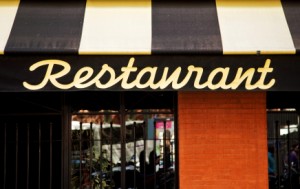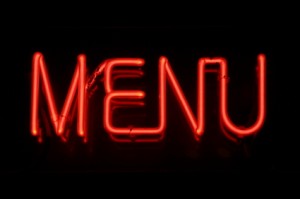 Have you ever walked into a restaurant absolutely certain that you know what you want to eat? Then the waiter hands you the menu and asks if you want to hear the specials. All of a sudden your “I’m absolutely certain that this is what I’m going to order” has taken a back seat to the pasta special. Why?
Have you ever walked into a restaurant absolutely certain that you know what you want to eat? Then the waiter hands you the menu and asks if you want to hear the specials. All of a sudden your “I’m absolutely certain that this is what I’m going to order” has taken a back seat to the pasta special. Why?
Remember Paul Simon’s song, “Mother and Child Reunion”? According to Simon he “was eating in a Chinese restaurant downtown. There was a dish called Mother and Child Reunion. It’s chicken and eggs. And I said, I gotta use that one.”
Putting aside the popularity of the song, who would think to describe chicken and eggs as a Mother and Child Reunion?
Is What You Order Really Your Choice?
Smart restaurant owners and chefs use creative phrasing and mouthwatering descriptions to describe their food. They’re using menu psychology to suggestively sell from their menu pages. They use design, placement, and words to direct your attention to key items on their menus so it’s more likely that you’ll notice, remember, and order what they’ve pointed you toward.
Sometimes they highlight their signature dishes, but mostly they want to get you to focus on their high profit margin items — the ones that make them the most money. They aren’t always the most expensive, but they are the most profitable.
There’s nothing wrong with ordering something that’s going to make money for a restaurant, but wouldn’t you like to feel that the selection is purely your choice rather than the restaurant’s?
Menus Target Both Your Stomach And Your Mind
A menu is targeted not just at your stomach, but also to your mind.
Gallup once reported that most people spend an average of 109 seconds reading a menu — a pretty short amount of time. Even if people take longer to really read it — after all, some menus are like encyclopedias — a menu’s design means more than a nice layout. It requires psychology and marketing, too.
It’s in the restaurant’s best interest to really pay attention to its menu – a redesign can improve sales by an average of 2 to 10% — which could mean a significant boost in income.
So, a descriptive phrase like “Mother and Child Reunion” is just one of many ways to influence your choice. The messages are often subliminal, but where menu items are placed, how graphics are used, the way the food and drink choices are described, and even the use of dollar signs — all send you directional signals.
The bottom line is that restaurants hope that their menus — a magical brew of prices; superlative or descriptive words; and varying fonts, sizes, and colors — will play with your brain cells and nudge you toward making the choices they would like you to make.
Do you eat out? This is the second article in a series of consecutive posts about decoding restaurant menus. Keep checking back for more information that might help you with your restaurant choices.
